Portugal’s tourism boom transformed once-quiet coastal villages into international hotspots, though the country still holds countless secret places that remain virtually unknown to foreign visitors. These spots exist in the gaps between major tourist routes—forgotten valleys, isolated beaches, mountain villages, and urban neighborhoods that locals still guard somewhat protectively. Many require real determination to reach, whether through unmarked trails, rough roads, or simply knowing where to look.
The best discoveries often happen when travelers ditch their planned itineraries and follow tips from Portuguese friends or random encounters with locals who remember when their regions attracted zero tourists. Here is a list of 15 locations across Portugal’s most beautiful regions that deliver authentic experiences far from any crowds.
Odeceixe River Beach
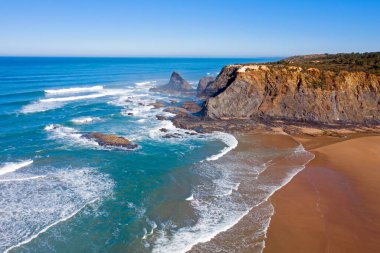
Where the Odeceixe River meets the Atlantic, a protected estuary creates this unusual dual-environment beach that most Algarve visitors completely miss. The riverside offers calm, warm water that’s perfect for families with small kids, while the oceanside delivers typical Atlantic surfing conditions just 100 meters away.
Local families have used this spot for generations, building makeshift shade structures from driftwood and beach umbrellas rebuilt each season. The surrounding cliffs hide several unofficial camping spots where Portuguese surfers establish semi-permanent camps during summer.
Monsaraz Castle Village
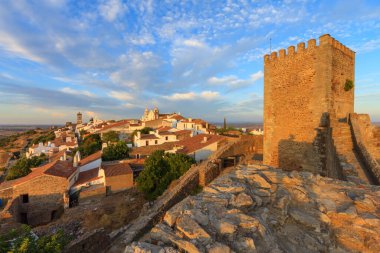
This medieval hilltop village near the Spanish border houses fewer than 150 permanent residents but keeps a complete medieval street layout within intact castle walls. Most tourists rushing between Lisbon and Seville drive past the turnoff without knowing they’re missing one of Europe’s best-preserved castle towns.
The village’s single restaurant serves traditional Alentejo cuisine, featuring ingredients sourced from surrounding farms, while the local inn occupies a converted 16th-century mansion. Evening visits work best—village lights create magical effects against the surrounding plains.
Like Travel Pug’s content? Follow us on MSN.
Passadiços do Paiva Wooden Walkways

These suspended wooden walkways follow the Paiva River through 5 miles of pristine gorge landscape in the Arouca region. The engineering feat lets visitors experience dramatic river rapids and boulder formations that were previously off-limits without serious rock climbing skills.
The walkways end at a 516-meter suspension bridge that holds the world record for the longest pedestrian bridge, though most visitors turn back before reaching this final section. Portuguese adventure enthusiasts found this area decades before it got official recognition and infrastructure development.
Tavira Island Beach Access

While Tavira Island gets regional visitors, few tourists know that small boats ferry passengers to completely undeveloped sections of the barrier island throughout the day. The eastern end contains pristine dunes and beaches that face no development pressure due to protected status within Ria Formosa Natural Park.
Local fishermen operating from Tavira village provide informal boat service to these remote sections, though passengers need to arrange return transport ahead of time. The isolation creates chances for naturist swimming and complete beach solitude even during peak summer.
Sistelo Terraced Village
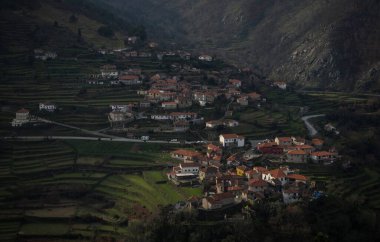
Hidden in northern Portugal’s Peneda-Gerês region, this village keeps traditional agricultural terraces that have been carved into mountainsides for over 800 years. The terracing system creates landscapes resembling Asian rice paddies more than typical Portuguese countryside, earning the nickname ‘Portuguese Tibet.’
Fewer than 300 people live permanently in the village, yet the community maintains the terraces using traditional methods passed down through generations. The surrounding hiking trails connect to other abandoned villages, slowly being reclaimed by the forest.
Like Travel Pug’s content? Follow us on MSN.
Praia da Ursa Bear Beach
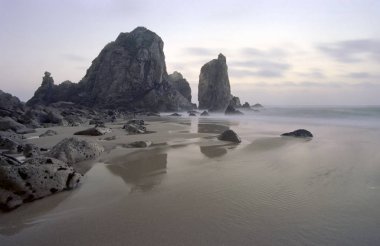
This hidden beach near Sintra demands a challenging 30-minute hike down unmarked cliffs to reach a pristine cove surrounded by dramatic rock formations. The beach’s name comes from a bear-shaped rock formation that becomes visible only from the beach level itself.
Most tourists visiting the nearby Cabo da Roca lighthouse never know this spectacular beach exists just 2 miles away down an unofficial trail. Portuguese surfers and photographers treat this as sacred territory, arriving early morning to catch optimal lighting on the distinctive rocks.
Aveiro Salt Flats Sunset
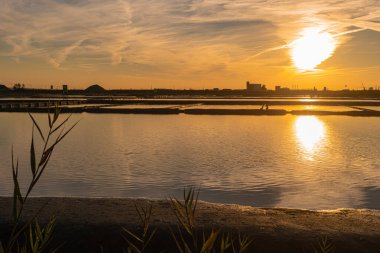
Beyond Aveiro’s colorful boats and university town vibe, the surrounding salt flats create otherworldly landscapes that change dramatically throughout the day. Late afternoon light transforms the shallow water channels into mirrors reflecting sky colors, while traditional salt harvesting structures create geometric patterns across the flats.
Local photographers and bird watchers consider sunset at the salt flats superior to any coastal sunset in the region. The area stays completely undeveloped for tourism, maintaining its working landscape character while delivering spectacular natural beauty.
Piodão Schist Village
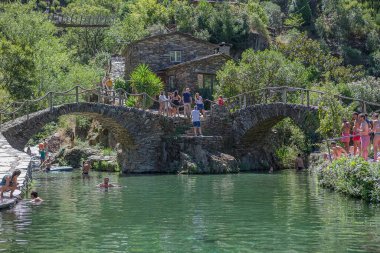
This mountain village, built entirely from local schist stone, creates a harmonious architectural ensemble that seems to grow directly from the surrounding hillsides. Only 250 people live in Piodão year-round, yet the community maintains traditional crafts and agricultural practices that have stayed essentially unchanged for centuries.
The village’s isolation in the Açor Mountains protected it from modern development pressures that transformed other Portuguese rural areas. Traditional festivals throughout the year offer chances to experience authentic Portuguese mountain culture without tourist-oriented modifications.
Like Travel Pug’s content? Follow us on MSN.
Benagil Cave Alternative Access

While the famous Benagil Cave draws thousands of visitors daily via organized boat tours, few people know about the alternative access point that allows swimming directly to the cave from a hidden beach. The route demands strong swimming skills and careful attention to tide conditions but delivers an intimate cave experience without crowds of tour boats.
Local surfers discovered this access method decades ago and still use it to avoid tourist boats while reaching excellent surf breaks near the cave. The swim takes roughly 15 minutes each way through clear water over a sandy bottom.
Douro Valley Quinta Visits
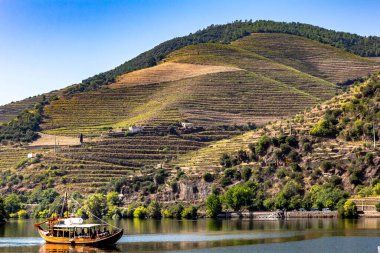
Beyond the famous port wine Quintas that cater to tourists, dozens of small family operations throughout the Douro Valley offer authentic winemaking experiences without formal tour programs. These visits happen through personal connections with local families who’ve made wine for generations without commercial tourism infrastructure.
Tastings occur in working cellars and family kitchens rather than purpose-built tasting rooms, providing insights into traditional Portuguese winemaking that differs significantly from commercial operations. The wines reflect unique terroir-expressions that never leave the local region due to small production volumes.
Comporta Rice Fields
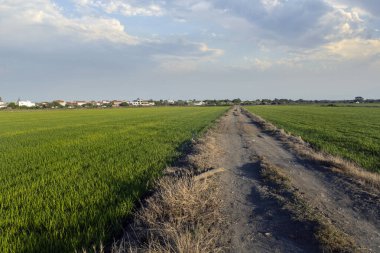
This Alentejo coastal region contains vast rice fields that flood seasonally, creating temporary wetlands that attract thousands of migratory birds. The landscape shifts dramatically between seasons—from dry stubble fields in summer to shallow lakes in winter that reflect surrounding pine forests.
Local bird-watchers consider this area superior to more famous Portuguese birding destinations due to its diversity of habitats within a compact area. Traditional rice cultivation methods create ecological conditions supporting species rarely seen elsewhere in Portugal.
Like Travel Pug’s content? Follow us on MSN.
Marvão Eagle’s Nest Village
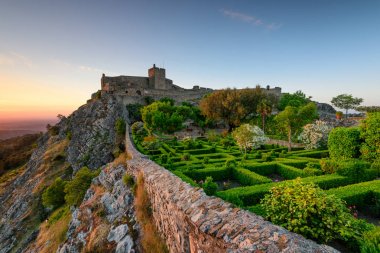
Perched on a granite outcrop near the Spanish border, this fortified village commands panoramic views across both countries while maintaining its medieval character. The village contains fewer than 200 permanent residents, yet every building within the ancient walls has been carefully maintained using traditional construction methods.
Evening visits provide the most dramatic experience—village lights create a floating effect against the dark surrounding plains. The village’s strategic location made it crucial during Portuguese-Spanish conflicts, and defensive features remain intact and functional.
Berlengas Island Nature Reserve
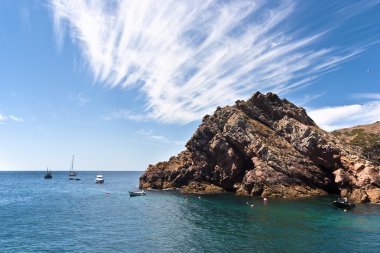
This small archipelago, six miles off Portugal’s central coast, contains pristine marine ecosystems supporting species found nowhere else in Portuguese waters. Access is limited to 350 visitors daily during summer months, though most Portuguese don’t know the islands exist despite their proximity to popular beach towns.
The main island contains a 17th-century fortress that now serves as basic accommodation for overnight visitors willing to rough it in historical surroundings. Crystal-clear water and abundant marine life create exceptional diving and snorkeling conditions rivaling Mediterranean destinations.
Aldeia da Luz Relocated Village

When Portugal built the Alqueva Dam, the original village of Luz was completely submerged, but residents relocated to a purpose-built new village that recreates traditional Alentejo architecture using modern construction techniques. The project represents one of Europe’s most successful planned community relocations, maintaining social structures and cultural traditions while providing improved living conditions.
The old village remains visible underwater during dry seasons, creating a haunting landscape that attracts photographers and curiosity seekers. The new village demonstrates how traditional Portuguese architecture can adapt to contemporary needs without losing cultural authenticity.
Like Travel Pug’s content? Follow us on MSN.
Óbidos Lagoon Kitesurfing
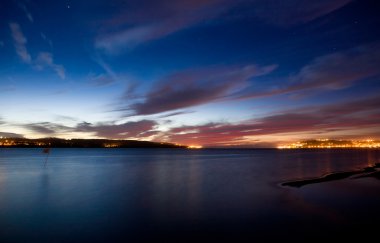
This large coastal lagoon north of Lisbon creates ideal conditions for kitesurfing and windsurfing, with consistent winds and protected water that allows skill development without ocean hazards. The lagoon is primarily known to Portuguese water sports enthusiasts rather than international tourists, maintaining a local club atmosphere at several informal launch sites.
Traditional fishing activities continue throughout the lagoon, creating interactions between modern recreation and traditional livelihood that reflect contemporary Portuguese coastal culture. The surrounding landscape includes salt marshes and bird-watching areas that provide alternatives when wind conditions aren’t right for water sports.
Portugal’s Hidden Character

These secret spots show Portugal’s ability to maintain authentic regional character despite dramatic tourism growth in recent decades. Each location reflects specific geographical, historical, or cultural conditions that created unique Portuguese experiences unavailable elsewhere in Europe.
The trick lies in visiting these places respectfully—understanding that their appeal depends partly on staying relatively unknown to mass tourism markets.
More from Travel Pug

- 20 Best Beach Towns in the Carolinas
- 13 Destinations Where Tourists Regularly Regret Their Trip
- 20 Destinations That Are More Magical Without an Itinerary
- 20 Underrated Adventures That Belong on Your Travel List
- 20 Cities Where You Should Just Wing It, No Planning Required
Like Travel Pug’s content? Follow us on MSN.w us on MSN.N.
